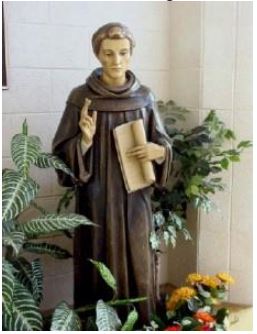Our Patron Saint
St Bede
Our school’s patron saint is the Venerable St. Bede, but who was St. Bede?
Well, the eighth century in English history is better known to us because of the writing of the Venerable St. Bede. If only for the worth of his history of Saxon England, St. Bede’s contribution to the world of knowledge would be formidable. He was esteemed as the most valuable contemporary historian of his time. However, his contributions extended to many other fields of knowledge -- to mathematics, philosophy, music, Hagiography and Scriptures.
Thus, in his own times, he was acclaimed as the most learned man, not only In England, but in all of Europe. This same acclaim was accorded him by the Church when he was proclaimed Doctor of the Church by Pope Leo III in the latter part of the eighteenth century. This was but the culmination of the honour and respect given him during the intervening thousand years.
St. Bede entered the monastery in Wearmouth at the age of seven. He remained at Wearmouth for about a year until the founding of a second monastery. St. Bede transferred to the monastery at Jarrow where he spent the rest of his life.
At the age of nineteen, St. Bede was ordained to the deaconate, extraordinary since the canonical age was twenty-five. By this time, he was already showing something of his ability as a teacher and was put in charge of the education of the oblate boys and the younger monks. By the time of his ordination to the priesthood in 703, he was already occupied with what was to be his main interest -- the history of the con- version of his own people and the lives of the saints of the early English Church. St. Bede’s title to sanctity lay not in any extraordinary deeds but in a life hidden in the cloister and devoted totally to the search for truth and the knowledge of God, the source of all truth and all knowledge. This search was to him not an end in itself, but a means whereby he would approach more nearly to God and bring others to God with him.
St. Bede was 62 years old when he died. The statue of St. Bede (pictured) represents him in the prime of his life. St. Bede’s right hand is raised in blessing -- he was a priest. The scroll represents his literary activity. The glove represents his historical scholarship.
